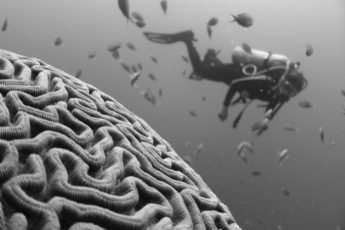Doctors often see patients presenting with physical ailments affecting the nervous systems that are not associated with any true injury or illness. These ailments arise from the embodiment of intense psychological distress and can range from epileptic-like seizures where there is no epilepsy, weakness, numbness, or even paralysis of limbs, blindness, slurred speech, mental fog, loss of other senses (auditory, taste, tactile, olfactory), to hallucinations. These afflictions are the expression of Conversion Disorder in which mental distress is “converted” to the manifestation of somatic,( body), symptoms. This does not mean that the symptoms are “all in their head”. These afflictions are real.
A good metaphor for Conversion Disorder phenomena is an infamous experiment done on subjects while under hypnosis at a deep theta level. The subjects were told that their arms were going to be burned and then were touched with a piece of metal at room temperature. Ten percent developed burns, while the remaining exhibited a red spot where they were touched. The blister and redness were real, though the promised heat was not. In both the burn experiment and Conversion Disorders the mind is converting psychological trauma to physical symptoms.
Studies have shown that trauma underlies most Conversion Disorder cases, though in some no trauma is identified. However, in both instances EMDR shows promise according to a meta-analysis published in the Journal of EMDR Practice and Research (Cope et al.. 2018), because even those with no causational trauma experience higher levels of distress due to symptoms than those diagnosed with a neurological disorder which causes the symptoms. So just exhibiting Conversion Disorder symptoms is traumatic and can be treated with EMDR. The authors recommend a fourfold approach to treatment:
1. Using EMDR to treat the PTSD symptoms
2. Using EMDR to process childhood trauma underlying the Conversion Disorder
3. Using EMDR to process the trauma associated with manifestation of Conversion Disorder symptoms.
4. Using EMDR to treat the Conversion Disorder symptoms
EMDR has long been proven an effective treatment for PTSD, but research indicates its effectiveness for disturbing memories that do not reach the criteria for a PTSD diagnosis such as memories of experiencing seizures in the absence of epilepsy or having the inability to talk.
Cope, S.R., Mountford, L., Smith, J. G., Agrawal, N., (2018). EMDR to treat Functional Neurological Disorder: A Review. Journal of EMDR Practice and Research, 12(3), 118-131.




